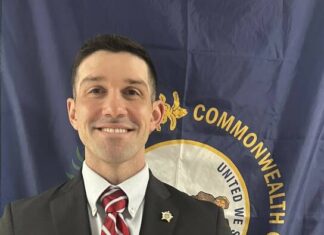It never really stops; sometimes it slows and sometimes it goes at breakneck speed. But it’s always advancing.
What is this unstoppable force? It is the destruction of Lexington’s unique architectural heritage (whose demise is always attributed to “progress”). During the past 50 years, it has included over half of Woodward Heights pretty much instantaneously — and the complete commercial block catty-corner from the Old Courthouse. Much of the “lost” has been replaced by new venues we all take advantage of, thinking of Rupp Arena, the Convention Center, and the soon-to-be Town Branch Park.
Also, various individual old buildings like the Ben Ali Theater downtown, Birch Nest out Old Frankfort Pike, the Thomas Watkins House formerly at the corner of Virginia and South Broadway, and many other mansions from past eras such as Mount Brilliant no longer exist except in memory. And now Meadowcrest — until recently at Winchester Road and I-75 — was demolished just this year. (Built in 1931, this locally designed gem did not even make it 100 years!) The one commonality used to justify destruction of these artistic creations is, “It wasn’t economically feasible to rehabilitate.” This excuse apparently cannot be challenged since such challenges are rarely successful.
Counteracting the “not economically feasible” excuse are tools like state and federal historic tax credits which can yield up to a 40% rehabilitation tax credit if both are utilized to rehab historic properties. But the owner must decide to pursue that route. Sometimes referred to as being abandoned for 20+ years, Meadowcrest was purchased almost 23 years ago by the current owner-developer. Thus, it was not abandoned; it was owned and should have been maintained so it could have been adaptively reused as part of whatever new development is created on the property. Taking that approach would have provided both a nod to the history of the building and could have added interesting uniqueness to any development.
Lexington continues to grow in population while the area within the local urban service boundary (needed to accommodate this increase) does not grow. This situation will increase the likelihood priceless gems like Meadowcrest will be razed to allow for new development needed to accommodate the expanding population. An answer to ensuring historic gems survive this pressure exists.
Individual buildings that reside outside of a local historic district can be protected from demolition through deed restrictions, historic overlays, landmark status, and facade easements. Great examples of single building protections are the AME Church on North Upper, and Helm Place on Bowman Mill Road. Both are protected from development by virtue of their local historic landmark status. That is because their owners made the decision to ensure their structures’ survival. While the owner must initiate the process, the Blue Grass Trust for Historic Preservation can help.
If you live in an area within Fayette County’s Urban Service Boundary unprotected by one of the above methods, we encourage you to investigate the mechanisms available to you to protect your neighborhood from the kind of dramatic changes affecting Meadowcrest. The Blue Grass Trust is always ready to help you understand your situation
-.
Bill Johnston is a member of the Community Education and Preservation Committee of The Blue Grass Trust for Historic Preservation. For more information, contact Dr. Jonathan Coleman, Executive Director, at 859-253-0362





